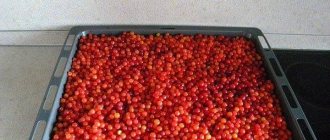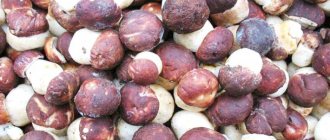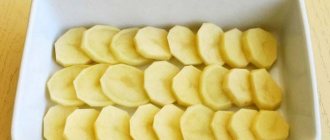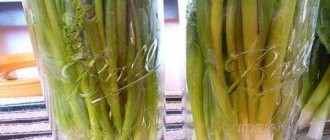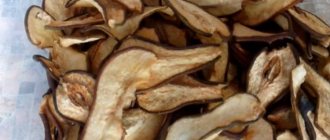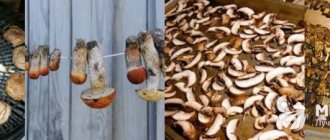Greetings, dear readers of the blog “Secrets of the Brownie”. Immediately after harvesting, the question arises: how to store Jerusalem artichoke, where to store Jerusalem artichoke, is it possible to store Jerusalem artichoke all winter? These questions arise not only for novice gardeners, but also for experienced summer residents.
Everyone knows the truth, it is important not only to grow the crop, but also to preserve it, so today I want to talk about 8 ways to store Jerusalem artichoke and what mistakes should be avoided when storing it.
Mistakes when storing Jerusalem artichoke
Jerusalem artichoke tubers have a very thin skin, and there is practically no subcortical layer, so it is poorly stored. To extend its shelf life, do not make the following mistakes.
- During mass harvesting in the fall, do not leave Jerusalem artichoke tubers in the light to dry. When exposed to light, the crop begins to deteriorate.
- Do not clear the soil from Jerusalem artichoke tubers; it ensures the safety of the crop. The tubers do not dry out or become flabby.
- Do not pour Jerusalem artichokes in a heap into a hole or basement, like potatoes. Jerusalem artichoke, although it is similar to potatoes, will not be stored like this all winter, it will simply rot.
The storage location of the Jerusalem artichoke harvest depends on its quantity. You can store Jerusalem artichoke: in the refrigerator, in the freezer, in a vegetable pit or basement, on an insulated loggia, in the ground, but the shelf life is not endless.
Let's look at the question of how to store Jerusalem artichoke at home?
How to collect Jerusalem artichoke correctly
In order for the tubers to be large, there is no need to rush into harvesting. Some gardeners are afraid of the onset of rain and dig up the root crop in advance, when it is still very small and almost tasteless. It is better to delay harvesting a little and allow the fruits to gain moisture and gain flavor.
As soon as the fruits are removed from the ground, they are immediately transferred to a shaded place. Sun rays and hot air will cause the root crop to begin to deteriorate.
Storing Jerusalem artichoke in the refrigerator
If the tuber harvest is not large, or you harvested only part of the harvest in the fall and left the bulk in the ground until spring, then you can store Jerusalem artichoke in the refrigerator. Here, optimal storage conditions are observed: a stable temperature of 3-4 degrees and a humidity of 85%.
To store Jerusalem artichoke in refrigerators, I put it in plastic bags, tie them and put them in vegetable drawers or on the bottom shelf of the refrigerator. This way I keep Jerusalem artichoke for up to 2 months, during which time we simply eat it.
How to properly dry and freeze earthen pear?
Storing Jerusalem artichoke at home is not limited to using the refrigerator, especially since the tubers will last no more than a month in it. And then if you put them in an airtight container or plastic bag. Peeled and chopped root vegetables will remain fresh for just a few days.
It is better to create homemade preparations in one of the following ways:
- Freezing. We clean the Jerusalem artichoke root, wash it, and cut it into strips or cubes. Blanch the product in milk-curd whey at maximum temperature for 5-10 minutes. Then cool the product and store it in the freezer.
- Use of sand. We take canvas or plastic bags, line them with wet sand, peat or sawdust and fill them with an earthen pear. You need to carefully tie the container, then the product will stand without problems on a not very warm balcony or unheated loggia until the weather warms up.
- T conventional drying. Before drying the earthen pear, it must be peeled, washed and cut into thin slices. We use only good tubers without wormholes or damage. Place the resulting pieces in a thin layer on a tray and keep them in the open air, protecting them from direct sunlight until the plates are ready.
Tip: To cut Jerusalem artichoke, it is recommended to use a ceramic or bone knife, because... the metal is heavily oxidized, causing the instrument to become unusable.
- Heat treatment. Jerusalem artichoke fruits can also be dried in the oven, it will be much faster. In a liter of water, dilute a teaspoon of baking soda and bring the resulting solution to a boil. Blanch the tubers cut into pieces in it for no more than 9 minutes. Then wait until they cool, cut into thin slices and dry until ready in the oven at a temperature of 60ºC. Place the finished product in an airtight glass container, otherwise there will be bugs in it.
Read also: Greenhouse in winter
Dried Jerusalem artichoke can be ground into coarse flour. This powder can be used in so many unusual and traditional recipes.
Storing Jerusalem artichoke in the freezer
But the capacity of the refrigerator is not unlimited, so part of the harvest can be stored in the freezer, if you have one, or in the freezer of the refrigerator.
In this case, the Jerusalem artichoke tubers need to be washed well, peeled, cut or grated and placed in resealable plastic containers or freezer bags.
Then, to prepare dishes from Jerusalem artichoke, you will use a ready-made preparation.
There is a lot of iron in Jerusalem artichoke tubers, so it quickly darkens when you grate it. To prevent the Jerusalem artichoke from darkening, I sprinkle the Jerusalem artichoke grated before freezing with lemon juice, and only then freeze it.
Some housewives freeze whole Jerusalem artichoke tubers after blanching them in boiling water for 5 minutes, but I don’t do that. I think that this is not rational, since in this form it takes up too much space. Frozen Jerusalem artichoke can be stored all winter.
When to collect Jerusalem artichoke leaves for tea
The best time to collect leaves is during flowering. To preserve the collection, the plucked parts of the plant must be thoroughly dried. A warm room with low humidity is suitable for this. It is important that the leaves are not exposed to sunlight, which destroys all the beneficial properties of the plant.
You can use an electric dryer. After processing, the leaves need to be placed either in a fabric bag or in a glass jar, but the first option is preferable - in this case, the collection will “breathe” and will be preserved for a longer time.
Storing Jerusalem artichoke on the loggia
Our house is not a vegetable base, but still part of the harvest has to be stored at home, so I use an insulated loggia to store Jerusalem artichoke. How to store Jerusalem artichoke on the loggia?
You can put Jerusalem artichokes in wooden boxes and cover them with wet sand, but I use a different storage method.
I put Jerusalem artichoke tubers in plastic bags and sprinkle them with sawdust. To prevent the Jerusalem artichoke from rotting, I make holes in the bags, then excess moisture will escape and the tubers will not rot. Jerusalem artichoke can be stored this way for 2-3 months.
Changes in the properties of frozen fish during storage
Physicochemical characteristics
Physicochemical changes include shrinkage, changes in color and histological structure.
When storing frozen fish, there is always a difference in water vapor pressure above the surface of the fish and the surrounding air environment of the refrigeration room. The pressure difference causes the evaporation of moisture from the surface of the fish and, as a consequence, its movement from the inner layers of the fish to the surface, i.e. internal diffusion. This difference can be reduced by lowering the storage temperature and increasing the relative humidity.
As a result of the evaporation of moisture, the fish shrinks, which depends on its type and chemical composition, properties and size, type of packaging, temperature and duration of storage, method of stowage and location in the chamber or hold, cooling system, refrigeration room, degree of loading, amount of heat inflow etc. The surface of the fish and nearby layers of muscle tissue are mainly subjected to shrinkage.
The color of fish meat dehydrated during refrigerated storage changes. It becomes spongy, and after thawing and cooking it becomes dry and fibrous.
The degree of shrinkage and quality changes depends on the storage temperature and the range of its fluctuations. As the storage temperature decreases, the shrinkage of frozen fish decreases: when storing frozen fish at a temperature of -30°C, the shrinkage is 3 times less than at -18°C. A decrease in storage temperature from -30 to -40°C is accompanied by a decrease in shrinkage by 0.013% each month of storage.
The amount of shrinkage depends on the chemical composition of the fish: the more moisture the fish contains, the more it can evaporate, so shrinkage is greater for lean fish than for fatty fish.
The drying of frozen fish also depends on the method of cooling the refrigeration chamber and hold. With a panel cooling system, shrinkage is less than with air cooling. Dense stacking of frozen fish helps reduce product shrinkage.
Factors such as glaze thickness, storage time, relative humidity and air circulation speed also play an important role. When storing frozen fish packed in polymer film, dehydration occurs during storage, but the moisture evaporating from the product remains inside the package in the form of frost.
One of the most effective ways to reduce the shrinkage of frozen Ufi fish during long-term storage, along with lowering the storage temperature, is its glazing using water-soluble polymer materials, as well as packaging in gas-vapor-proof films.
With prolonged storage, as well as with temperature fluctuations in the refrigeration room, chamber or hold, structural changes occur in the muscle tissue of frozen fish, which are caused by recrystallization of moisture: the number of large ice crystals increases; the fine-crystalline structure turns into a coarse-crystalline structure.
The longer the storage of frozen fish and the more unstable the temperature, the larger the size of the ice crystals in its tissues. In this case, the integrity of the muscle fibers is disrupted, which leads to large losses of tissue juice during thawing and, consequently, to a deterioration in the quality of the fish. After heat treatment, fish meat becomes drier and tougher, and its nutritional value decreases.
Recrystallization of ice in fish tissue causes a change in the color of the product due to unequal refraction of light at different sizes of ice crystals. The color of the fish may also change due to the formation of a dehydrated surface layer due to shrinkage.
Biochemical properties
During refrigerated storage, biochemical processes occur in frozen fish, leading to fat oxidation and protein denaturation, and for frozen fish with a high fat content, changes as a result of oxidative processes in fat are more typical, and for lean fish, denaturation changes in the protein system of the raw material are more typical.
The degree of these changes largely depends on the chemical composition and properties of frozen fish, temperature, duration of refrigerated storage, etc. The lower the storage temperature, the slower the denaturation and enzymatic processes in frozen fish. Fat oxidation in fish occurs even at very low temperatures (below -30°C).
Oxidative deterioration of fat is accompanied by yellowing and the formation of rusty spots on the surface of the fish. At the same time, fat oxidation products accumulate in the fish, worsening its taste and giving it an unpleasant odor.
However, subcutaneous yellowing is not always a sign of oxidative deterioration of fat. The skin of some marine fish contains fat-soluble substances - yellow and red carotenoids. During storage of frozen fish, protein-carotenoid complexes are destroyed, carotenoids pass into the subcutaneous layer of fat, causing subcutaneous yellowing in frozen fish. Subcutaneous yellowing, unlike oxidative spoilage of fat, is not a defect, since it does not impair the taste and nutritional value of the fish.
Drying fish during storage has a direct effect on fat oxidation and denaturation changes in proteins. With excessive shrinkage, not only weight loss is observed, but also accelerated fat oxidation as a result of the evaporation of ice from the surface layers of frozen fish, which facilitates the access of air oxygen to muscle tissue.
During long-term storage of fish, fat hydrolysis occurs, which is accompanied by oxidation, resulting in rancidity. To slow down the oxidative deterioration of fat, rapid freezing of fish to low temperatures, glazing, packaging of frozen fish in gas-vapor-proof polymer materials, as well as various antioxidants and low-temperature storage are used.
We recommend reading: How to Preserve Pears of Early Varieties Taken from the Tree Longer
Conditions and periods of storage of frozen fish
One of the most important factors determining the optimal conditions for long-term preservation of the quality of frozen fish during storage is the temperature and humidity conditions of the air in holds and refrigerated storage chambers. During storage, the optimal temperature and humidity must be maintained constant. In accordance with the technological instructions, the fluctuation in air temperature should be no more than ±0.5°C, and the relative humidity should not be more than ±1%. When loading and unloading chambers at 50% of their capacity, the air temperature is allowed to increase by 3°C, and above 50% by 4°C.
Frozen fish, the average final freezing temperature of which differs by more than 2°C from the air temperature of the refrigeration room, cannot be loaded into chambers or holds.
To equalize the temperature and humidity in the storage rooms of frozen fish, natural air circulation of 0.01-0.08%) must be maintained.
During the entire period of storage of frozen products in holds or storage chambers, the air temperature is systematically, 2 times a day, measured with remote temperature sensors or conventional mercury thermometers, and relative air humidity is measured once a week using a psychrometer. Temperature and humidity conditions for refrigerated storage of frozen products are recorded in a special log.
Boxes with frozen fish are stacked flat (lids up) with slats or floor gratings placed under the bottom row (Fig. 55), which are necessary to ensure free air circulation between the boxes and the floor of the refrigeration room. The height of the stack depends on the strength of the boxes and the height of the refrigerator chambers.
Rice. 55. Frozen fish storage room: I - stacking of boxes with frozen fish; II - laying in plan
When stacking boxes, there is no need to make spacers for each row: the denser the frozen products are stacked, the better they are preserved and the less shrinkage.
The packing density of frozen products per 1 m 3 of cargo volume depends on the type of fish, freezing method, type of container or packaging, as well as on the stacking method. Existing norms for the specific loading of frozen fish products per unit of cargo volume of storage chambers are given in Table. 29.
Table 29
Frozen sturgeon fish (glazed and unglazed) are stacked unpacked on racks covered with matting. A stack of frozen fish is covered on top and sides with matting, on top of which an ice crust (glaze) is frozen. Glazing of the stack is carried out evenly by irrigating the matting with cold water at a temperature of 2-3°C.
For better use of refrigeration space, it is recommended to place frozen fish at a distance: from walls without cooling devices - 0.3 m, from ceiling without cooling devices - 0.2 m, from cooling devices (wall and ceiling) - 0.4 m, from air ducts (bottom surface) - 0.3 m. In chambers with a heat-protective casing, no indents are made. The presence of indentations (gaps) promotes free air circulation between the walls to stacks of frozen fish products, as well as cleaning cooling devices from frost.
For cargo trolleys in the chambers, one passage 1.2 m wide is left for every 10 m of the width of the refrigerating chamber.
On a ship, boxes with frozen fish products are stacked from side to side evenly across the entire area of the hold to avoid the formation of a list. Each type of frozen product is placed separately.
To mechanize loading and unloading operations, a batch method of storing frozen fish products on pallets is used. To form packages, two types of pallets are used: standard international pallet 2P-04 (800 X 1200 X 150 mm) and 2P-04 (1200 X 800 X 150 mm).
The shelf life of frozen fish depends on its type and chemical composition, initial state, type of cutting, method and modes of freezing, type of packaging, storage temperature and other factors.
In table Table 30 shows the shelf life of some types of fish at different temperatures.
Table 30
Packing frozen fish in gas-vapor-tight films, especially when vacuum sealed, allows you to increase the shelf life of both lean and fatty fish. Thus, when packing frozen fish in bags made of polyethylene-cellophane, lavsan-polyethylene without vacuuming, the shelf life increases 2 times (with vacuuming - 3-4 times compared to packing frozen fish in bags with paraffin and silicone coating). The use of Saran-type shrink wrap helps extend the shelf life of frozen fish by 3-4 months compared to storage in parchment.
Evils of frozen fish
Dehydration (shrinkage) of the surface layer
- a defect in which, due to shrinkage of the surface layer, a thin white coating appears in the form of a “cold burn”, completely or partially covering the surface of frozen fish. The fish meat becomes discolored and acquires a dry, hard consistency. With excessive shrinkage, not only a loss of fish weight is observed, but also a deterioration in the hydrophilic properties of meat, as well as an acceleration of oxidative deterioration of fat.
Oxidative deterioration of fat
occurs during long-term storage of frozen fish under the influence of atmospheric oxygen and oxygen contained in the tissues of the fish. As a result of oxidation, the odor of the product deteriorates.
Subcutaneous yellowing of fat
unlike oxidative spoilage, it does not impair the taste and nutritional value of frozen fish.
Subcutaneous yellowing of fat is caused by the transition into the subcutaneous layer of fat of carotenoids - fat-soluble substances of yellow or red color, contained in the skin of fish in the form of protein-carotenoid complexes, which are destroyed during storage. Subcutaneous yellowing occurs only in fish that have a subcutaneous layer of fat and whose skin contains at least 0.8 mg% of carotenoids.
Old smells
are a sign of denaturation changes in the protein system of frozen fish, especially manifested during long-term storage in fish with a high moisture content. With the appearance of the “old smell,” a change in the consistency of fish meat is observed, which after cooking becomes fibrous and tough.
During refrigerated storage, biochemical processes occur in frozen fish, leading to fat oxidation and protein denaturation, and for frozen fish with a high fat content, changes as a result of oxidative processes in fat are more typical, and for lean fish, denaturation changes in the protein system of the raw material are more typical.
Drying Jerusalem artichoke
It can be dried naturally, in a vegetable dryer or in the oven. I dry Jerusalem artichoke in the oven. I thoroughly rinse the Jerusalem artichoke from the soil, dividing it into individual tubers, peel it and dip it in a solution of citric acid for a few minutes (1 teaspoon of citric acid per 1 liter of water). This is necessary so that the tubers do not darken.
Then I cut the Jerusalem artichoke with a ceramic knife into thin slices and place them on a paper towel to absorb excess moisture.
I place the prepared slices on a baking sheet covered with parchment or baking paper and dry them in the oven at a temperature of 60-75 degrees. When Jerusalem artichoke is almost dry, a specific smell appears, similar to the smell of sunflower stems.
I determine readiness by touch. If the slice bends, then it needs to be dried further. If the slice breaks with a bang when bent, then it is ready. It is important to ensure that the Jerusalem artichoke does not burn. Typically, a kilogram of raw Jerusalem artichoke in dry form yields 150 grams.
Dried Jerusalem artichoke is stored in glass or cardboard containers for up to 1 year.
Ready-made crackers taste sweet. They can be consumed with milk, tea, coffee, added to compote or simply chewed.
Dried
A large harvest of Jerusalem artichoke is ideally preserved dried. It is cut into slices and dried at a temperature of 60 ° C by any acceptable method:
- In a natural way: in a cool, ventilated, darkened room, spread out in one layer on the surface or strung on a string.
- Oven.
- Air fryer.
- Electric dryer.
- Microwave oven.
Dried vegetables should be stored in glass containers; it is better to place them on the refrigerator shelf.
Tip: before drying, it is recommended to blanch the pear slices for 10 minutes in soda or salted water, as well as in milk-curd whey (at 95°). The last option is also good before placing it on the freezer shelf.
How to dry properly
Dried root vegetables do not spoil in room conditions for up to 2 years. Preparation of the dietary supplement will take 6-10 hours. Drying is a good way to preserve mangoes.
- rinse the fruits thoroughly and remove the peel;
- cut into slices 0.5 cm thick;
- line a baking sheet with parchment paper;
- place the slices in one layer;
- dry in a slightly open oven at a temperature of 50-60° for 5 hours.
Juicy fruits may not dry out during this time. Then they are cooled and put into the oven again for 2-3 hours.
The finished dried Jerusalem artichoke is collected in glass containers with tight lids. Store in a dark, dry place without foreign odors.
Drying methods
Dried Jerusalem artichoke retains almost all the beneficial properties inherent in the root vegetable. You can prepare it in several ways - in the oven, electric dryer or naturally, in the fresh air.
On air
Drying root vegetables in air is one of the most accessible and popular methods that allows you to preserve the main properties. This procedure should be carried out within 5-7 days, which should be sunny and clear. Cloudy weather is not recommended for drying Jerusalem artichokes in the open air, since the process will be significantly delayed, and the root crops themselves risk being damaged by gnats and flies.
It is necessary to place whole or chopped Jerusalem artichoke on parchment paper and expose it to the open air. The product can be considered completely ready as soon as all the moisture has evaporated from it.
In the oven
The oven drying process is faster and can be used at any time of the year, regardless of weather conditions. In this case it is necessary:
- Line clean baking sheets with special baking paper.
- Cut the Jerusalem artichoke tubers into thin slices and place them on lined baking sheets so that they do not touch each other.
- Set the oven temperature at +50 degrees and leave for three hours. During this period, some of the water will evaporate from the chopped tubers.
- Leave the Jerusalem artichoke slices alone for one day so that they can cool naturally.
- Place the chopped root vegetables back into the oven, where they will finally cook at 60 degrees.
The result will be thin and crispy, very tasty slices of Jerusalem artichoke, which fully retain their beneficial properties.
In an electric dryer
An electric dryer is very convenient for preparing such preparations, since it is equipped with several sections and a function for adjusting the temperature level. On the dashboard you can set all the necessary parameters in advance. The device will notify you that the product is ready with a special signal.
Jerusalem artichoke blanks
The easiest way to prepare salted Jerusalem artichoke.
Wash the Jerusalem artichoke tubers well, carefully peel, cut into thin slices, place tightly in an enamel container, pour cold salt brine (1.5-2 tablespoons of salt per 1 liter of water), put a weight on top of a wooden circle. Leave for 2-3 days in the fermentation room, then transfer to a cold place and leave to mature for 15-20 days. Then you can use it as an independent dish or add it to salads or vinaigrette.
You can make juice from Jerusalem artichoke using a juicer, and dry the cake and add it to soup or baked goods.
I bring to your attention a salad of Jerusalem artichoke with carrots for the winter, proposed by Elena Koneva.
Now you know how to store Jerusalem artichoke at home, but it turns out you can easily store it directly at your summer cottage.
How to store Jerusalem artichoke tubers
Jerusalem artichoke fruits are root vegetables; their storage technology differs from how potatoes are stored.
Jerusalem artichoke fruits are root vegetables; their storage technology differs from how potatoes are stored.
If you simply pour the earthen pear harvest into the cellar, it will all quickly deteriorate. To prevent the fruits from drying out, the air humidity should be about 85% and the temperature below +4 °C.
There are several ways to preserve the healing properties and taste of root vegetables:
- canning;
- drying;
- freezing
How to store Jerusalem artichoke in the refrigerator and freezer
You can keep Jerusalem artichoke in the refrigerator next to other products for 3 weeks. The vegetable compartment is the best place for storage. To prevent the fruits from drying out, they are packaged.
For this use:
- plastic bag;
- plastic container with a sealed lid;
- glass jar.
How to freeze Jerusalem artichoke
Frozen fruits do not lose their nutritional value for 3 months.
Large fruits are cut into pieces and grated
They are processed before being sent to the quick freezing chamber. Root vegetables are washed and the peel is removed with a knife. Small specimens are placed in bags and frozen whole.
Large fruits are cut into pieces and grated. Place on a silicone baking sheet and place in the quick freezing compartment. The next day they are poured into bags, sour cream cups, disposable and plastic containers.
How to store Jerusalem artichoke in the cellar
No refrigerator is enough to store a large amount of earthen pear. Part of it should be lowered into a cellar or basement at the dacha. The soil is not removed from root crops; it protects it from drying out.
Advice! Root vegetables will last longer if they are covered with a layer of paraffin.
Boxes are required for storage. The fruits are placed in them in layers, each one sprinkled with sand or small sawdust. Containers are placed in stacks in the cellar. Fruits are stored well in a layer of sand until spring.
How to store dried Jerusalem artichoke
Dried Jerusalem artichoke
Drying allows you to preserve the entire range of useful substances in root vegetables. Summer residents use a proven recipe.
Ingredients:
- 1 kg of root vegetables;
- 1 liter of water;
- 1 tsp. citric acid crystals.
Preparation:
- The fruits are soaked and washed, removing any remaining dirt with a brush. Water is poured into a container and acid crystals are dissolved in it. The fruits of the earthen pear are peeled and dipped in acidified water.
- The peeled root vegetable is cut into thin strips, first laid out on a towel, then transferred to a baking sheet covered with parchment. The oven is heated to a temperature of 100 °C, and baking sheets are placed in it.
- Open the oven door slightly while drying. The process continues for several hours. Turn the chips periodically, making sure they don’t burn. Dried Jerusalem artichoke is poured into storage containers (jars, containers) after complete cooling.
On a note! The shelf life of dried earthen pear is one year. From 1 kg of raw materials 150 g of finished product is obtained.
Use of dried Jerusalem artichoke:
- make tea;
- added to vegetable dishes;
- eat like chips.
How to store Jerusalem artichoke for the winter in an apartment?
The healthy vegetable is used as a raw material for homemade preparations. The root crop is combined with other vegetables, fruits, and spices.
Salad
A tasty and healthy salad for the winter is prepared from Jerusalem artichoke.
Ingredients:
- 1 kg of ground pear;
- 500 g carrots;
- 1 large lemon.
Preparation:
- Root vegetables are washed, peeled, and cut into slices.
- The lemon is washed with soap and grated together with the zest on a coarse grater.
- Mix vegetables and lemon juice with pulp, salt to taste, and place in sterilized jars. They are pasteurized for at least 30 minutes before being rolled.
Jerusalem artichoke jam
Jam
For dessert, jam is made from Jerusalem artichoke and pumpkin pulp. It can be stored at home in the refrigerator or placed in the cellar.
Ingredients:
- 1 kg pumpkin pulp;
- 1 kg Jerusalem artichoke;
- 1 cup of sugar;
- 1 medium sized lemon.
Preparation:
- The fruits and pulp of the pumpkin are cut into pieces. Grate lemon. Transfer the ingredients into a saucepan, add sugar, and stir.
- When the vegetables give juice, place the pan on the stove, bring to a boil, reduce the heat, and cook for another 5 minutes.
- The jam is poured hot into sterile jars, covered with lids, and placed under a fur coat for a day.
Fans of spicy dishes will love the recipe for marinated Jerusalem artichoke with pepper.
Marinade with pepper
Jerusalem artichoke for the winter in a spicy marinade
Ingredients for the marinade:
- 900 g of Jerusalem artichoke fruits;
- chilli;
- ½ tbsp. mustard seeds;
- 2 tbsp. Sahara;
- a glass of vinegar 5%;
- 1 lemon;
- 1½ tsp salt.
Prepare the appetizer in the following sequence:
- The fruits are soaked, washed, peeled, and cut into 10mm slices.
- A 1 liter jar is washed and sterilized.
- Place Jerusalem artichoke slices in the prepared container in layers, sprinkling each with mustard seeds, and place hot pepper on the bottom.
- Prepare a marinade from water, zest, spices, and add vinegar at the very end.
- Boiling brine is poured into a jar and sterilized for 10 minutes.
- The jar of pickled Jerusalem artichoke is screwed up and, after cooling, placed in the refrigerator or lowered into the cellar.
